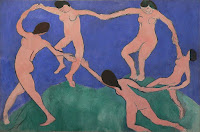 |
| Joan of Arc WWII - Commercial poster |
This blog post is dedicated to 3 articles read during the last month including one very recent about Etsy.com. They all have one sad common theme: Major mistakes in marketing and social media efforts done by companies we wish...didn't, because a certain level of professionalism is expected. This implies there ARE room for mistakes. Companies are made of humans and humans make mistakes. It is just that on this corporate level an initiative from a PR department conducting a recap moment is expected. And there is certainly a limit to how much you can blame it on bad planning and misunderstandings too. As always I want to point to the fact that it is always much easier to criticize than to walk the right path yourself. Regardless, these articles can be a learning lesson about what not to do. To sum up the underlying message it must be the following: What ever you are making, make it with purpose and not for money reasons only, cause sooner or later the lack of quality or your shallow intentions will be uncovered.
1. Stay true
2. Do not underestimate your audience
3. If you do not believe in your product, nobody else will.
Read about Gap's "Made in USA" holiday sales campaign to support their philanthropic "Feed the poor program" (Turned out one bag was made in China): Gap Sends Conflicting Messages This Holiday Season
An interesting comment about Gap's blunder, authenticity and ethics: Be Authentic in Branding
At last but not least, a blog post about the recent Etsy.com "situation" (read while thinking: Please don't tell me this is true!): Congratulations. You've Tarnished Your Brand.












